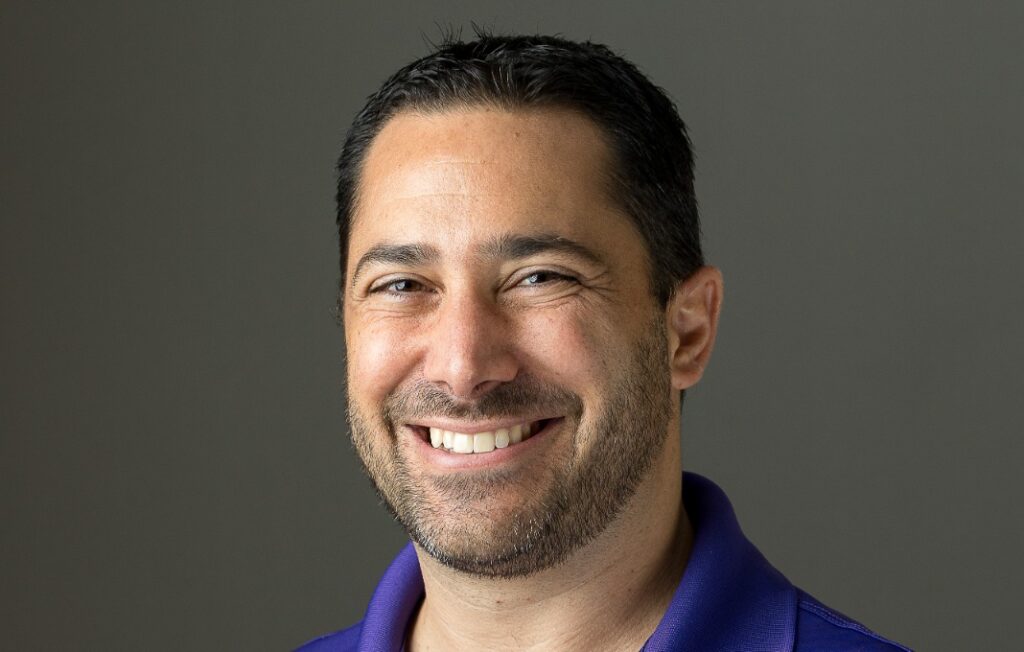With the elevation of the human resources function to the C-Suite in recent years, the relationship between CEOs and Chief Human Resources Officers has become increasingly important for the effective management of companies. That trend exploded when the Covid-19 pandemic and subsequent disruptions in labor markets further emphasized the importance of human resources to enterprises’ strategic success.
“Every company has its mission and core values: We care about people, people first, all that,” says Omni Hotels and Resorts CHRO Joy Rothschild. “The pandemic forced people to the top priority every single day in a way that companies had never had to deal with before.” As a result, the relationship between CEOs and HR leaders has in many cases transformed over the last two years.
“When I think about pre-pandemic, it was so much more transactional,” says Nicole Hopkins, former Interim Head of People at Webflow and founder of HR consultancy Up & to the Right Consulting. “It would be CEO X encountering a people issue or a scaling issue and saying, ‘What is your playbook solution to that? What is the best practice?’” The pandemic forced CHROs and CEOs to have much closer partnerships as they had to confront the simultaneous public health and economic crises.
“You were having to get in a room and problem solve quickly on topics that had never been there before,” such as major concerns about job security, isolation and mental health problems. “How do you provide for people who are really struggling, losing family members or friends to Covid?” says Hopkins.
The relationship between CEOs and CHROs, like all key relationships in a business, depends on a high level of trust and understanding. While much of that comes down to rapport and interpersonal relationships, it is also based in large part on how well CHROs demonstrate that they are focused on the larger, strategic goals of the company, rather than simply fulfilling the immediate needs of HR.
If CHROs are not careful, “the recruiting team could easily be just filling recs and being like, ‘Oh we’ll hire an engineer, we’ll hire product, etc.,’” cautions Scott Domann, Chief People Officer at Calm. Instead, they need to understand the intention of the organizational design and whether hiring decisions actually align with the strategic needs of the enterprise. It means being able to say, “These roles don’t fit with that,” Domann says, and then following up to understand whether “there is a change in strategy or if someone in the organization didn’t fully understand the strategy and is just hiring based on previous experience.”
Entering the C-Suite
For many years, HR was not treated as a strategic function in many companies, and its leaders typically reported up to C-Suite leadership, rather than being a part of it. Over the past two decades, however, there has been a concerted effort by HR professionals and groups like the Society for Human Resource Management to professionalize the field. “HR traditionally has hired a lot of people who don’t come from business,” says Kristie Loescher, Professor of Instruction, Management and Assistant Dean for Instructional Innovation at the University of Texas at Austin’s McCombs School of Business. “They came from communications or journalism or liberal arts or even bookkeeping and were brought over to the HR side.”
HR heads didn’t always have the business backgrounds that their counterparts in the C-Suite had. One consequence of this is that at some companies, particularly those with older CEOs who may have been in the job for many years, HR can remain stuck in the past. CEOs who had early experiences of HR leaders as people who basically kept rules and told them they couldn’t do things may have lower expectations of HR to this day. “It’s all about, what does a CEO expect? If the CEO sets the expectations that it is a rule-keeper organization that tries to keep us from getting sued too often and manages payroll and insurance…then they probably won’t see more than they expect,” Loescher says.
Increasingly, these older approaches—from either side—don’t cut it. HR leaders must be experts in the strategic side of the business as well as the nuts and bolts of employee management. To succeed, today’s CHROs need to be able to “speak the language of business and go into a room where the decisions are made and understand how the people part of the business impacts the strategy,” Loescher says. On the flipside, CEOs need to be increasingly in tune with how HR and people impact the business, and look for more support from their CHROs.
Expectations, in other words, become self-fulfilling. “When I started my career, HR leaders would always say they wanted a seat at the table and things like that,” says Domann. “But people were more focused on the tactical elements of HR that were more related to employee relations, employment law.” Now, he says, it has “flipped to people leadership,” requiring more of a strategic background.
The Pandemic Gauntlet
It goes without saying that the pandemic disrupted virtually every facet of life. Businesses are still grappling with the fallout, whether by confronting broken or overtaxed supply chains or struggling to find and retain talent amidst the much-ballyhooed Great Resignation and a tight labor market. While many companies had already elevated human resources to the C-Suite before the pandemic, when it struck, many CEOs were faced with a sudden understanding of how many facets of the business HR touches upon. The pandemic “forced discussions” about things like “people safety, health, their livelihoods, their work-life balance, their pay, at the highest level of the organization for a very sustained period of time, which in my career was unprecedented,” says Rothschild, a 42-year HR veteran at Omni Hotels and Resorts.
Coming into the pandemic, “CEOs may not have really understood the power of the HR function,” says Loescher. “So much of their success is driven by corporate culture, by being able to attract and retain the best talent, by having a good succession plan for replacing positions that are really important.” All of those areas were suddenly in jeopardy when the pandemic hit. Companies with capable CHROs who had strong relationships with CEOs weathered those storms better. For CHROs, the pandemic has been “a kind of promotion by fire,” Loescher says.
The conversations and problems CHROs and CEOs were facing were not easy to resolve and circumstances often changed quickly.
“CEOs are about metrics,” says Rothschild. “HR people have not always been about metrics.” To work successfully with a CEO, particularly during a high stress, high risk period, requires translating HR goals and needs into data that can be understood and analyzed. “We’re talking about how many jobs do we have open? How many did we fill last week? Where do we need to focus our efforts? Where do I need to send a task force?” says Loescher. “This is now part of the business agenda, and it’s in a way that it’s never been before.”
The centrality of human resources during the pandemic and its prolonged aftermath has put a spotlight on the relationship between CEOs and CHROs, Domann says. They must be able to work closely together, understand the shared strategy and goals of the company, but have complimentary skillsets and aptitudes. “Your Chief People Officer is a great business executive first and foremost,” he says, but they must “be a great executive with a superpower in people.”
The companies that fared the best during the pandemic were those that already had CHROs and CEOs who were engaging on HR issues strategically before it struck. The immediate labor pressures caused by the pandemic had to be understood—and responded to—within the context of a larger strategic plan, and that means thinking “multiple moves out,” Domann says. It requires CEOs and CHROs to be able to have conversations about whether “we are getting ahead of ourselves or are we missing something significant over these next couple of quarters as opposed to leaping into the third year of the three-year plan?”
Executive teams that were already engaged in this kind of thinking around HR before the pandemic were more likely to already be developing the talent they would need in the future—either by educating employees internally or sourcing them from outside—than companies where HR was only working tactically and without collaboration with the CEO.
Recipes for Success
Wherever your company and its CEO-CHRO relationship is at, there are specific things that CHROs can do to make their work with their CEOs more effective and productive.
- Know the strengths and weaknesses of the company. According to University of Texas at Austin’s Loescher, this means understanding where to push for more productivity and where that won’t be possible. It also means understanding which positions are most essential and when to try to hire, partner or outsource to achieve specific goals.
- Understand the talent context. When CHROs engage with CEOs to achieve strategic goals for their company, Loescher says they need to understand not only the talent context within the company—what it needs to achieve its goals—but also the ecosystem in the community and the larger talent market. How is the talent pool shifting and how should priorities right now be balanced against future needs?
- Think holistically. “You can’t just lead with the people, culture, employee relations side,” says Calm’s Domann. “You really have to understand the depth of the underpinnings of the business, the overall business strategy, the financials, etc., in order to have an overarching people perspective.” CHROs who are unable to talk about HR within this larger context will struggle to connect with CEOs and the broader C-Suite.
- Understand where the business is at. It’s not enough for CHROs to understand the overall strategy and goals for the business, they also need to be able to talk about where the business is growing, where it is struggling and how a people strategy can support both, Domann says. “We have to be able to bring the people aspect to the strategic conversation,” and that means identifying retention risks, for instance, and being able to talk about them in terms of financial consequences.
Perhaps most important—and this pulls on what has been an HR leader’s strong suit since the origin of the position: overcommunicate. CHROs often serve as clearing houses for information, helping CEOs understand what is actually happening within the company and feeding that back to the workforce. This is particularly the case in larger organizations.
Early in the pandemic, “We did a pulse survey of our leaders and the few people that were still left running things,” says Omni’s Rothschild, and “the company said, ‘We’re not getting enough information.’” In response, the HR team started doing weekly calls with the entire company (it had gone from 22,000 employees to just 1,800 virtually overnight when the pandemic hit). “We kept those phone calls going for months because people needed to hear what we thought was happening to the business.” And HR, more than any other part of the company, was the department to do it.








